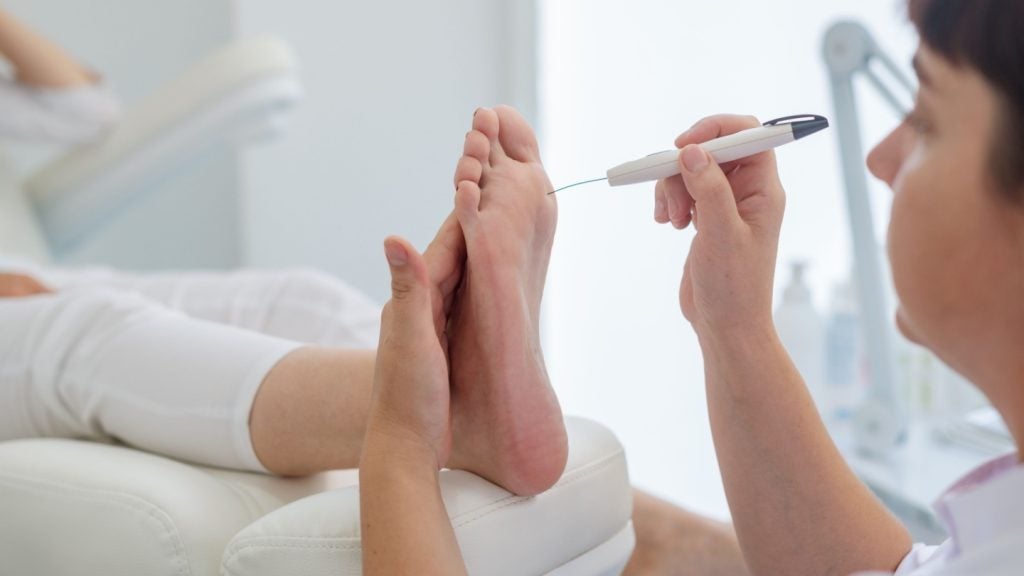Covid-19 leads as Hospital Management lists the top five terms tweeted on healthcare in Q4 2021, based on data from GlobalData’s Healthcare Influencer Platform.
The top trends are the most mentioned terms or concepts among Twitter discussions of more than 150 healthcare experts tracked by GlobalData’s Healthcare Influencer platform during the fourth quarter (Q4) of 2021.
1. Covid-19 – 2,296 mentions
The effect of booster dose administered to vaccinated nursing home residents, Covid-19 risks among unvaccinated pregnant women, and intensive care unit (ICU) occupancy rising in Ontario, Canada, were some of the popular discussions in Q4 2021.
Farzad Mostashari, CEO of healthcare services provider Aledade, shared an article on how vaccinated nursing home residents who received a booster dose are ten times less likely to contract Covid-19 compared to the vaccinated residents who did not receive their booster dose. The data was released by the Centers for Disease Control and Prevention (CDC) while comparing Covid-19 case rates between long-term care facility residents who received their vaccination and those who were unvaccinated.
The findings revealed a higher rate of infection among residents who received their first vaccination including those who were unvaccinated. The case rate among residents who received their booster dose remained consistently lower, demonstrating vaccine effectiveness over time. Rochelle Walensky, director of the CDC, recommended booster doses for nursing home residents and staff to boost their immunity amid the rise in Omicron variant cases.
See Also:
Ruth May, chief nursing officer at the National Health Service (NHS) England, shared an article on the risks associated with Covid-19 infection in unvaccinated pregnant women. Data from the UK Obstetric Surveillance System (UKOSS) revealed that out of the 1,714 pregnant women admitted to hospitals with symptomatic Covid-19 between 01 February and 30 September 2021, unvaccinated women accounted for 98.1%, while 1.5% received one dose, and 0.4% received two doses. Furthermore, 235 women were referred to intensive care, among who 98.7% were unvaccinated and 1.3% received the first dose. May added that there is an urgent need for pregnant women to get vaccinated to reduce the risk from Covid-19.
How well do you really know your competitors?
Access the most comprehensive Company Profiles on the market, powered by GlobalData. Save hours of research. Gain competitive edge.

Thank you!
Your download email will arrive shortly
Not ready to buy yet? Download a free sample
We are confident about the unique quality of our Company Profiles. However, we want you to make the most beneficial decision for your business, so we offer a free sample that you can download by submitting the below form
By GlobalDataIn another tweet, Dr. Nathan Stall, a doctor specialising in internal medicine and geriatrics, shared an article on how an increase in Covid-19 cases will lead to an increase in ICU occupancy in Ontario. The Ontario COVID-19 Science Advisory Table comprising scientific and health experts released a report on 12 November 2021 on the increase in Covid-19 instances in most public healthcare facilities despite testing remaining constant. The report highlighted that hospitalisations and ICU occupancy was stable, but the overall ICU occupancy was expected to rise. Vaccination provided effective protection against Covid-19 infection, hospitalisation, and long-term Covid-19 infection, the report added. Furthermore, people from low-income groups, essential workers, and minorities were found to be at a higher risk of contracting Covid-19. The report recommended the need to pause reopening plans and implement indoor mask-wearing mandates apart from ensuring that people are fully vaccinated.
2. Digital Health – 1,520 mentions
The use of telehealth services versus in-person care, technology company Oracle’s acquisition of health information technology services provider Cerner, and digital health apps improving patient outcomes were some of the popular discussions in Q4.
Jamey Edwards, chief operating officer at venture capital company StartUp Health, shared an article on the post-pandemic preferences of patients between telehealth services and in-person care in the US. A study conducted by the RAND Corporation, a non-profit research organisation, looked at how out-of-pocket payments impacted the use of telehealth among patients. The study revealed that 67% of the patients opted for virtual care to some level. However, when the hypothetical expense of a virtual visit increased from $10 to $30, more than 62% of the patients who had previously favoured video visits stated that they would prefer an in-person visit. The survey highlighted that telehealth use was considerably higher post-pandemic than pre-pandemic, encouraging lawmakers to pass legislation that will make the flexibilities introduced during the pandemic permanent. Lawmakers launched the Cures 2.0 bill in November 2021, a bipartisan initiative that will simplify the process for receiving reimbursement from Medicare for telehealth services.
John Lynn, editor and founder at healthcare services company HealthcareScene.com, shared an article on Oracle acquiring Cerner for $28.3bn. The company plans to use its existing technologies to upgrade Cerner’s systems and migrate them to its Gen 2 Cloud platform. The deal is considered to be Oracle’s largest acquisition ever as well as the largest healthcare IT transaction ever by a software major. The acquisition comes in the wake of some major healthcare deals, including Amazon’s $753m acquisition of online pharmacy PillPack in 2019 and Microsoft’s $19.7bn acquisition of Nuance Communications, a provider of conversational artificial intelligence (AI) for the healthcare providers, in 2021, the article detailed.
In another tweet, Glen Gilmore, principal of consulting and digital marketing firm Gilmore Business Network, shared an article on how digital health apps are boosting patient outcomes and increasing accessibility. Apps that check symptoms, handle lateral flow test data, and vaccine passports have gained traction during the pandemic, assisting people in managing some of the health effects related to Covid-19. People can now interact with clinicians through virtual consultations, track their general health metrics, and remotely monitor and manage their health problems using the apps, the article highlighted. Health apps can also improve healthcare sustainability by minimising patient and clinician travel, allowing for remote patient monitoring (RPM), treatment and medication, the article detailed.
3. Artificial Intelligence (AI) – 363 mentions
Life sciences companies using AI and data sets to improve patient experience, AI-enabled emotional robots helping people in need of care, and the importance of AI application and governance in healthcare were some of the popular discussions on AI in the last quarter.
Antonio Grasso, founder and CEO of technology company Digital Business Innovation, shared an article on life sciences companies using AI and data sets to improve product development and patient experience in healthcare. The companies can collect and combine product-related data from internal and external sources including patients, healthcare professionals (HCPs), social media and supply chain systems. Such actionable information can be used to enhance product design and packaging by applying AI.
A report from consulting firm Deloitte on the use of AI-generated product intelligence revealed that the technology can reduce the regulatory investigation process by between 55% and 60% for life sciences companies. AI can be used to analyse patient insights on aspects such as product ineffectiveness and unclear usage instructions. The analysis can be used towards product iterations and product design that can ultimately improve a life sciences company’s market share, the article highlighted.
Ian Weissman, radiologist at Milwaukee Veterans Affairs Medical Center, shared an article on AI-enabled emotional robots helping people who need care including the elderly and children. Robots can become more universally accepted in society by providing emotional interaction to people. Education technology company RoboKind, for example, created a robotic teacher named Milo, which can assist youngsters with autism spectrum disorders. It can educate them about emotional expressiveness and empathy, while gathering data on their progress so that learning and treatment can be targeted simultaneously.
In another tweet, Donna K. Lencki, founder and CEO of Old Field Ventures, shared an article on the importance of AI governance in healthcare. AI-based applications are being deployed in several healthcare areas although an all-inclusive solution is unavailable leading to poor interoperability between various departments. AI governance can address these issues and reduce inconsistencies, inefficiencies and expenses. A multi-disciplinary governance body should be implemented to examine all the advantages related to an AI application, especially when it is being used by multiple services and clinicians. Furthermore, an AI implementation strategy should be designed, while identifying the areas that require AI application the most, the article highlighted.
4. Internet of Things (IoT) – 213
IoT transforming the healthcare industry, the rise of IoT security incidents in healthcare, and the first Covid-19 IoT entry screening system being tested in Australia were some of the popular discussions around IoT in the fourth quarter.
Tyson Lester, president at medical benefits brokerage services provider Policy Advantage Insurance Services, shared an article on how IoT is transforming the healthcare industry. IoT-enabled healthcare devices can provide vital diagnostic data, allowing healthcare professionals to provide better patient healthcare. The Internet of Medical Things (IoMT), for example, can provide data that can be used to generate better treatment methods. Furthermore, IoT-enabled technologies such as insulin delivery systems, cancer treatments, and RPM are helping patients in various ways. The Open Artificial Pancreas System (OpenAPS), for example, can assist diabetes patients to detect the quantity of glucose in their blood and help patients administer the appropriate insulin dose, the article highlighted.
Hugh Sullivan, principal and CEO of MailMyStatements, a healthcare billing and payment technology service company, shared an article on the rise of IoT security incidents in healthcare. Healthcare technologies including telehealth, RPM tools, and wearable technology allow effective care, but increase security risks. A white paper from healthcare cybersecurity firms Medigate and CrowdStrike reported that more than 80% of healthcare firms experienced IoT security events in 2021. Furthermore, the rise of cyberattacks on IoT devices indicated the need to invest in security precautions for IoT devices, the article highlighted. Endpoint detection and response (EDR), co-ordinated visibility, network segmentation, and effective insurance plans were among the solutions proposed in the white paper to protect IoT devices.
In another tweet, Tony Dao, informatics specialist at Children’s Health of Orange County (CHOC), a paediatric healthcare facility, shared an article on the first Covid-19 IoT entry screening system being tested in Australia. The system was developed by the University of Sydney and Sydney Children’s Hospitals Network and tested at the Westmead Children’s Hospital. It uses a customised QR code to allow physical gate entry relying on a mix of Covid-19 test questions and temperature assessments. The Covid-19 IoT entry screening system can be effective in large settings such as airports, and sports and entertainment arenas and can help in the detection of Covid-19 mutations or repurposed for use with other viral disorders. The sensing technology is designed to improve people’s self-awareness of Covid-19 risk variables or symptoms, as well as hotspot locations and contact tracing, the article noted.
5. Wearables – 117 mentions
The use of wearables in paediatric healthcare settings and the adverse effects of using wearables were some of the trending discussions on wearable in Q4 2021.
Rafael Grossmann, a surgeon and innovator, shared an article on the use of wearables in paediatric healthcare settings. Several smartphone-based medical apps are now available, which can be utilised to improve patient care. Technologies such as VitalFlo, a high-tech spirometer that communicates with a smartphone app, Mightier, a smart tablet-based system, and MightySat, a medical-grade fingertip oximeter, can be used to help doctors provide better care for asthmatic patients and treat children with anxiety. Paediatric cardiologists have also recommended patients to use wearable smartwatches to track their heart rate, the article noted.
In another tweet, Donna K. Lencki, shared an article on the adverse effects of wearables in healthcare. Wearable gadgets with an electrocardiogram feature such as the Apple Watch can make it easier for clinicians to monitor patients at home. Doctors, however, are cautious to adopt the technology stating that false-positive readings could lead individuals to seek needless medical attention, putting pressure on the system. Byron Allen, a cardiologist and clinical professor at the University of California at Irvine, noted that the influx of wearable data has downsides, stating that a third of patients who came in were concerned about an Apple Watch notification received a false positive reading. Similarly, the widespread use of wearable gadgets as fitness trackers can be problematic for people with eating disorders or obsessive-compulsive behaviours, the article noted. https://twitter.com/ZGJR/status/14448








Related Company Profiles
Amazon.com Inc
Apple Inc
Microsoft Corp
Oracle Corp
Cerner Corp